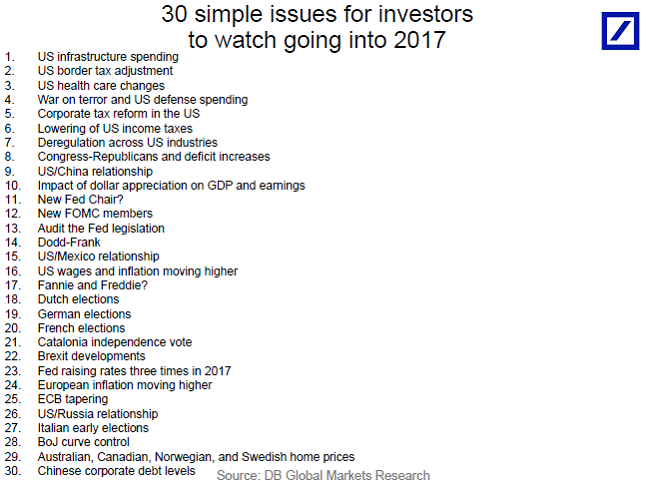Fed minutes, auto sales — What you need to know in markets on Wednesday
It’s jobs week in America, but the economic calendar will be a bit lighter on Wednesday as the main feature will be a look back at the Federal Reserve.
At 2 pm ET on Wednesday, the Fed will release the minutes of its latest meeting — held December 13-14, 2016 — at which it voted to raise interest rates for the first and only time in 2016 and for just the second time since the recession.
There were no dissents in the Fed’s latest decision, but markets will still parse the minutes for clues about whether the Fed’s discussion really indicated as much as a shift in thinking about 2017’s rate outlook as the “dot plot” implied. We’d note that Fed Chair Janet Yellen downplayed this plot, which showed the Fed now expected three instead of two hikes next year, during her press conference.
Also on Wednesday, December sales from major automakers will cross during the day, with economists expecting sales to hit an annualized pace of 17.7 million vehicles.
This will come after the auto industry was in the news on Tuesday. President-elect Donald Trump tweeted on Tuesday morning about GM’s building of a slow-selling car slated to see production move to Mexico. Elsewhere, Ford scuttled plans to build a $1.6 billion factory in Mexico and instead said it would invest $700 million and create 700 jobs at a plant in Michigan.

Risks everywhere
Investing is a fraught business.
Because while some of the work involves building positive cases for business that you think will earn you a return on an investment over time, much of the work is spent planning — or perhaps bracing — for what could or might or will go wrong.
To this end, Deutsche Bank economist Torsten Sl?k on Tuesday circulated a list of the firm’s top 30 (30!) issues for investors heading into 2017.

The firm calls these simple. Of course, however, each issue has its own depth of complexity.
And when you think about something as broad as the “US/Russia relationship” it becomes obvious that thousands — probably more like millions — of pages have been written on the subject and there are still few clear answers beyond that the US is in North America and Russia is in Europe and Asia. And even then.
So, what is an investor to do?
If all of these things matter, and none of them are particularly simple on their own, is it worth just sitting in cash and waiting for each storm to blow over? It is unlikely that this would, over the long run, prove the most profitable strategy.
And it’s worth keeping in mind that these are macro risks — what some would call “headline risks” —that, were any of them to crop up, you’d likely to find written about on Yahoo Finance and a host of other business media platforms.
These are the risks that come up in long analyst notes, in discussions at panels, and, again, in intermittent news stories.
The challenge as an investor is to know which risks to really worry about. If you’re a bottom up stock-picker, industry trends and the moat enjoyed by any particular business you might invest in is certainly to be a more important risks than any of those listed by Deutsche Bank.
A macro strategist might need to know a little bit about all of these topics.
But a simple rule of thumb will likely best serve most investors, no matter your experience, goals, or expertise: if you haven’t heard of it, it’s not worth losing sleep over.
—
Myles Udland is a writer at Yahoo Finance. Follow him on Twitter @MylesUdland
Read more from Myles:
